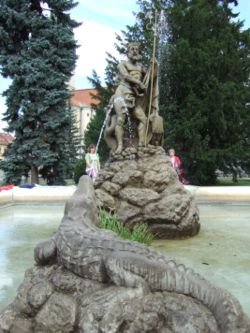Prešov is a city in eastern Slovakia, the administrative center of the Prešov Region and Prešov District. At the end of 2020, with a population of 87,886, Prešov was the third most populous city in Slovakia (after Bratislava and Košice). It is located in the historic Šariš region (approximately 60 km from the border with Hungary and approximately 75 km from the border with Poland).
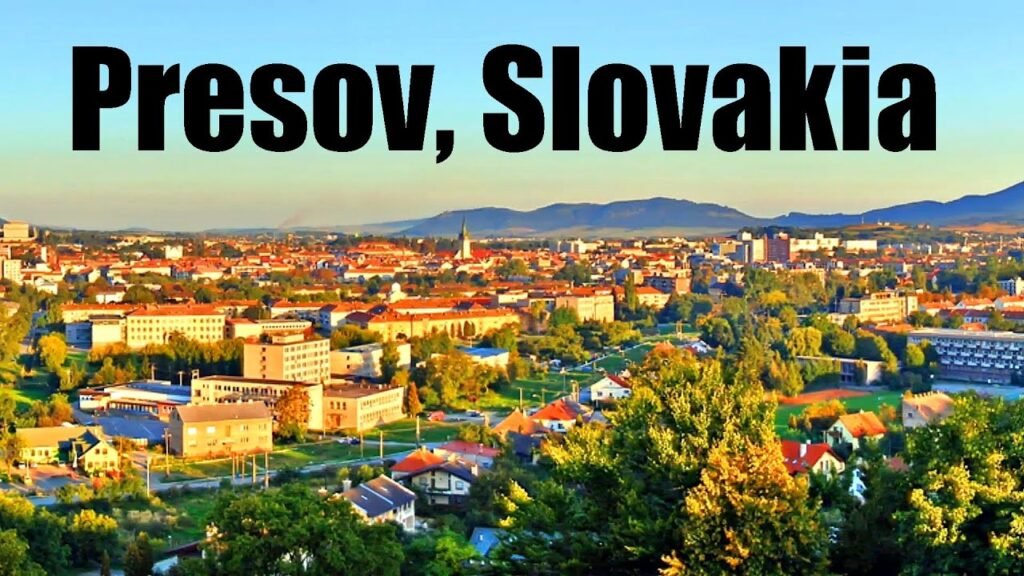
- The Church of the Holy Trinity in Prešov in northeastern Slovakia, built in the 1640s by local Protestants, served as the main church of the Eastern District of the Evangelical Church of the Augsburg Confession in Slovakia from 1930 to 1945 and again since 1994. This massive, brick building in the late Renaissance style features three naves and a slightly narrower, three-sided chancel. It is situated on a north-south axis, just north of St. Nicholas’ Church. Towerless, with only a small turret on the roof ridge where the nave meets the chancel. A sacristy was added to the chancel from the east. The choir loft features an organ from 1642–1647 (later reconstructed several times), and a gallery above the side aisles.
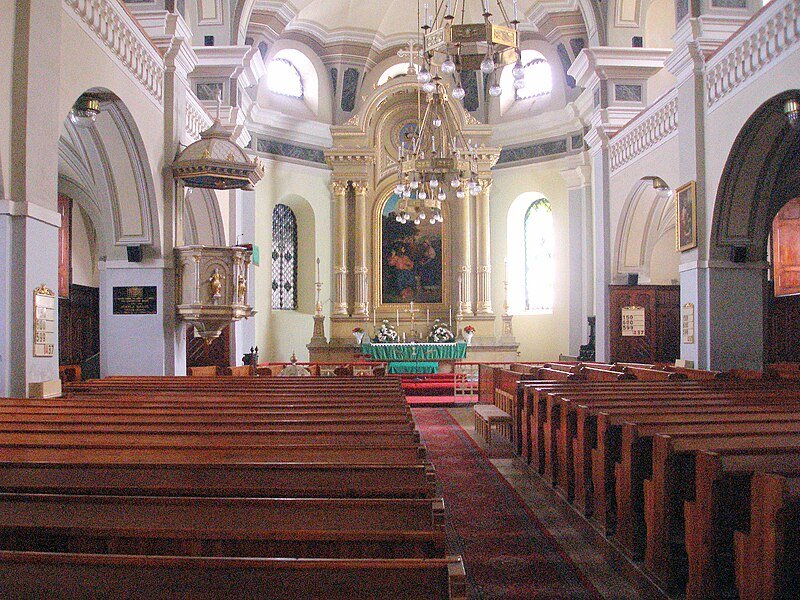
- The Greek Catholic Cathedral of St. John the Baptist is a Greek Catholic church in Prešov, northeastern Slovakia. It is the cathedral of the Slovak Catholic Church of the Byzantine-Rusyn rite (Slovak Greek Catholic Church). A single-nave brick church, situated on an east-west axis, with a chancel on the western side. The facade is five-bay with a flat, three-bay projection in the center, separated by flat pilasters and topped by a blind gable with a painted scene depicting the baptism of Jesus by John the Baptist. Above the decorative, arched portal, with a pair of columns projecting from the wall face and topped with vases, is a decorative coat of arms cartouche. A square clock tower adjoins the main body on the north side, topped by a two-story domed roof with a spire. The nave is three-bay, each bay covered with a separate sail vault. The chancel is narrower than the nave.
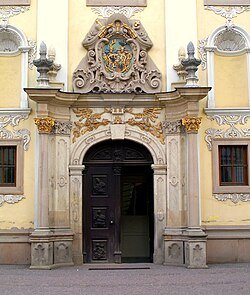
- The Prešov Calvary is a Baroque complex of religious buildings built in the 18th century in Prešov, on a hill west of the city. Historically, it was considered the second most beautiful calvary in the Kingdom of Hungary, after the Banská-Štiavnica Calvary. The Society of the Agonizing Christ, founded by the Jesuit Order in the early 18th century, initiated the construction of the Calvary in Prešov. The founders were the city, as well as the townspeople and local nobility. Construction of the chapels began in 1720, and the church was built between 1752 and 1753. The construction of the church and calvary was overseen by the Jesuit priest František Perger (who also led the construction of the calvary in Banská Štiavnica). The first chapel (Christ’s Prayer on the Mount of Olives) was consecrated in 1721. Most of the complex was completed by 1769, with a few chapels added at the end of the 19th century.
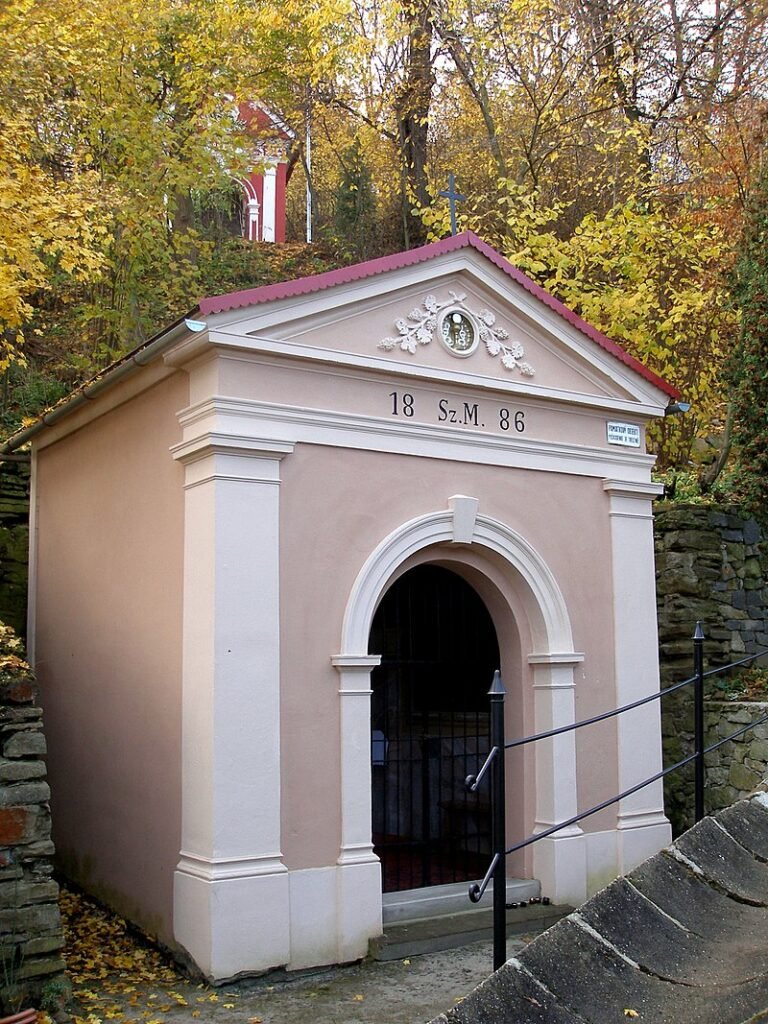
- The Orthodox Synagogue in Prešov, a former Orthodox synagogue in Prešov, Slovakia, is currently the only functioning Jewish church in the city and one of the most beautiful synagogues in Slovakia. It also houses the Museum of Jewish Culture (Židovské múzeum Prešov). It is located in the northern part of Prešov’s Old Town, deep within a larger plot of land between Okružná and Jarková Streets, between the rabbinate and the former Jewish school. Built in 1897-98 by the Kollacsek und Wirth construction company, it was a lavish, two-story structure in the Neo-Moorish style with numerous oriental architectural elements. It was the centerpiece of a complex of Jewish communal buildings (a prayer house, a cheder (Jewish school), a rabbinate, a ritual slaughterhouse, and others) built by the Jewish community outside the city walls from the 1880s. The synagogue served its purpose until 1942. After a long hiatus, it is now once again used for religious purposes. At the same time, thanks to its richly decorated interiors (still adorned with ornamental paintings by A. Grazl, preserved in excellent condition) and its fully preserved furnishings, it is now one of the most valuable Jewish monuments in Slovakia.
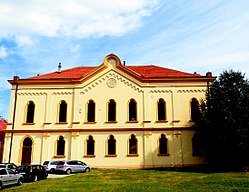
- Rákóczi Palace in Prešov (Slovak: Rákocziho palác) is a Renaissance-Baroque city palace in Prešov, Slovakia, the former residence of the Rákóczi family. Currently, it houses a museum. The representative palace was begun by the Transylvanian prince Sigismund Rákóczi at the end of the 16th century. The two-story building was erected in the central part of the square, on its eastern side, on the purchased adjacent plots of land belonging to two burgher houses. One of these houses belonged to the first Prešov bookseller, Kasper (Gašpar) Güttler. The Renaissance building, with a side wing facing the garden perpendicular to the main building, was rebuilt in the early 17th century. This remodeling resulted in the creation of a distinctive façade with three shallow bay windows, topped by a prominent attic. The attic, concealing the three-bay sunken roof, consists of a wide band of blind arcades, topped by a series of gables and arches, and the entire structure is covered with graffiti decoration. Both stories on the façade are crowned by prominent cornices. The passageway in the front section is widened to two bays, and its arched vaults are supported by two round stone columns. Upon completion, this palace was considered the most beautiful building in what was then called Upper Hungary.
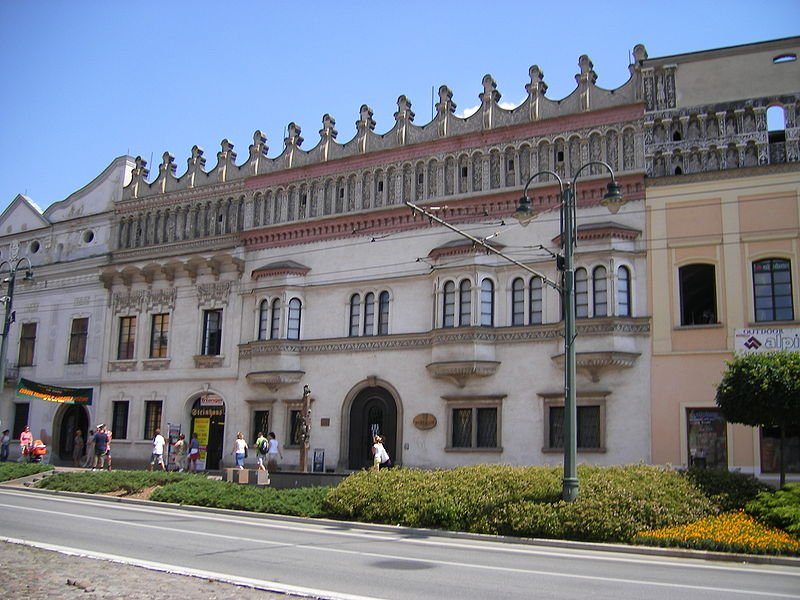
- Florian’s Gate in Prešov (Slovak: Floriánova brána) is the only surviving gate of the former defensive walls of Prešov in Slovakia. It is located in the western part of the Old Town, at the mouth of Florianska Street (Slovak: Floriánova ul.). A road that once led to Spiš, towards Levoča, led from it. It was built in the first half of the 15th century as part of the new defensive walls on the western side of the city. A moat surrounded the walls on the outside, and the gate was equipped with a drawbridge. It was then called the “Small Gate”[1]. The first reconstructions of the gate took place in the 17th and 18th centuries. In 1808, the gate underwent a comprehensive reconstruction in the Baroque-Classicist style, completely losing its defensive function. Along with the rooms added to the adjacent sections of the former defensive walls, it was adapted to the needs of the newly built city hospital. At the beginning of the 20th century, the famous painting on the gate building facing the city, depicting St. Florian was completely destroyed and was replaced in 1915 with a new depiction of the saint by the Prešov painter Max Kurth.
- Caraffa’s Prison (Slovak: Caraffova väznica) is a late Gothic structure in the Old Town of Prešov, Slovakia. A brick, two-story building from the early 16th century (ca. 1504-1510) at the rear of the current town hall, clasped with massive buttresses, it is one of the few preserved Gothic buildings in Prešov. The current town hall building originally housed a winery, and the building itself likely served as a storage facility for wine, empty barrels, and other equipment until the end of the 17th century. According to some written records, the building was supposed to have housed municipal standards of weight and measure, and for a time also housed the municipal armory. In the second half of the 19th century, the building housed a municipal prison. The building acquired its current name during the famous Prešov massacres in 1687, when the imperial general Antonio Caraffa supposedly held 24 Prešov burghers and representatives of the local Hungarian nobility there, who supported the anti-Habsburg uprising of Emeryk Thököly, sentenced to death and then executed in the market square, in front of the Evangelical College.
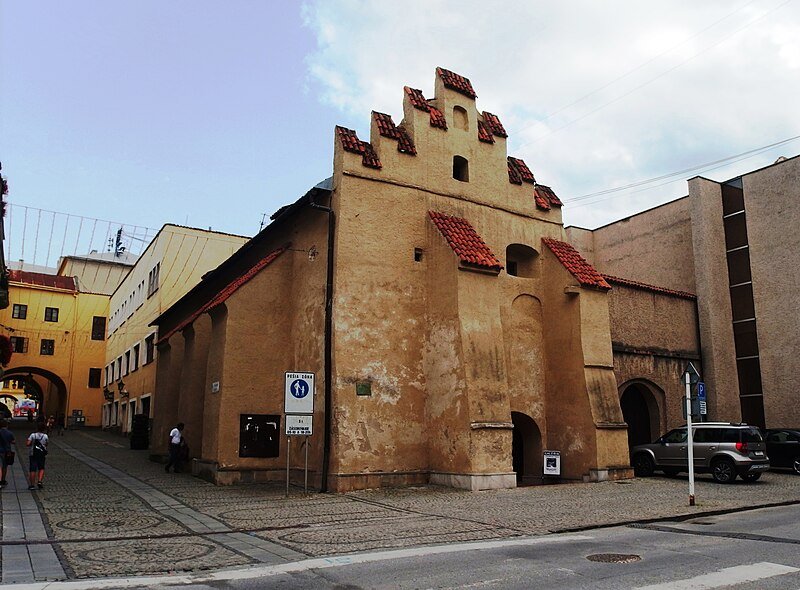
- The Marian Column in Prešov is a Baroque plague column in the northern part of the main square in Prešov, eastern Slovakia. The column was built in 1751 at the initiative of the local Jesuits to commemorate the victims of the plagues that struck the city in 1679 and 1710. The massive, quadrangular, three-story column made of sandstone, topped with a sculpture of the Immaculate Virgin Mary (Immaculata) with the Child Jesus and a scepter, is attributed to Jozef Hartmann. The Virgin Mary and the Child have large, gilded crowns; the pommel of the scepter is also gilded. Of the four sculptures of saints on the lower tier, only two (St. Nicholas and St. John of Nepomuk) have survived in their original form. The column stands on the site where the so-called The Prešov massacres – a series of executions in which the general of the imperial army, Antonio Caraffa, ordered the execution of 24 people from among the Prešov townspeople and local nobility who had supported Emeryk Thököly’s anti-Habsburg uprising in recent years.
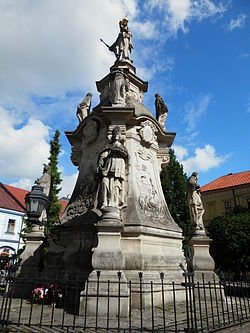
- The Neptune Fountain in Prešov (Slovak: Neptúnova Fontana) is a historic fountain in the southern part of the town square in Prešov, Slovakia. It is the only surviving former municipal “cistern.” Before the construction of the municipal waterworks, 10 such “cisterns” served as water reservoirs for the city’s residents. The fountain’s basin has a profiled stone frame on a square plan, the sides of which bulge outward in a semicircular shape. The Neptune sculpture was founded in the early 19th century by a wealthy Jewish merchant, Marcus Hollander, as an expression of gratitude to the city authorities, who granted him permission to settle and conduct business in Prešov. The sculpture of Neptune, with an original trident and surrounded by aquatic creatures, was created by Košice stonemason and sculptor Vincent Staviarsky, who completed the work in 1826.
